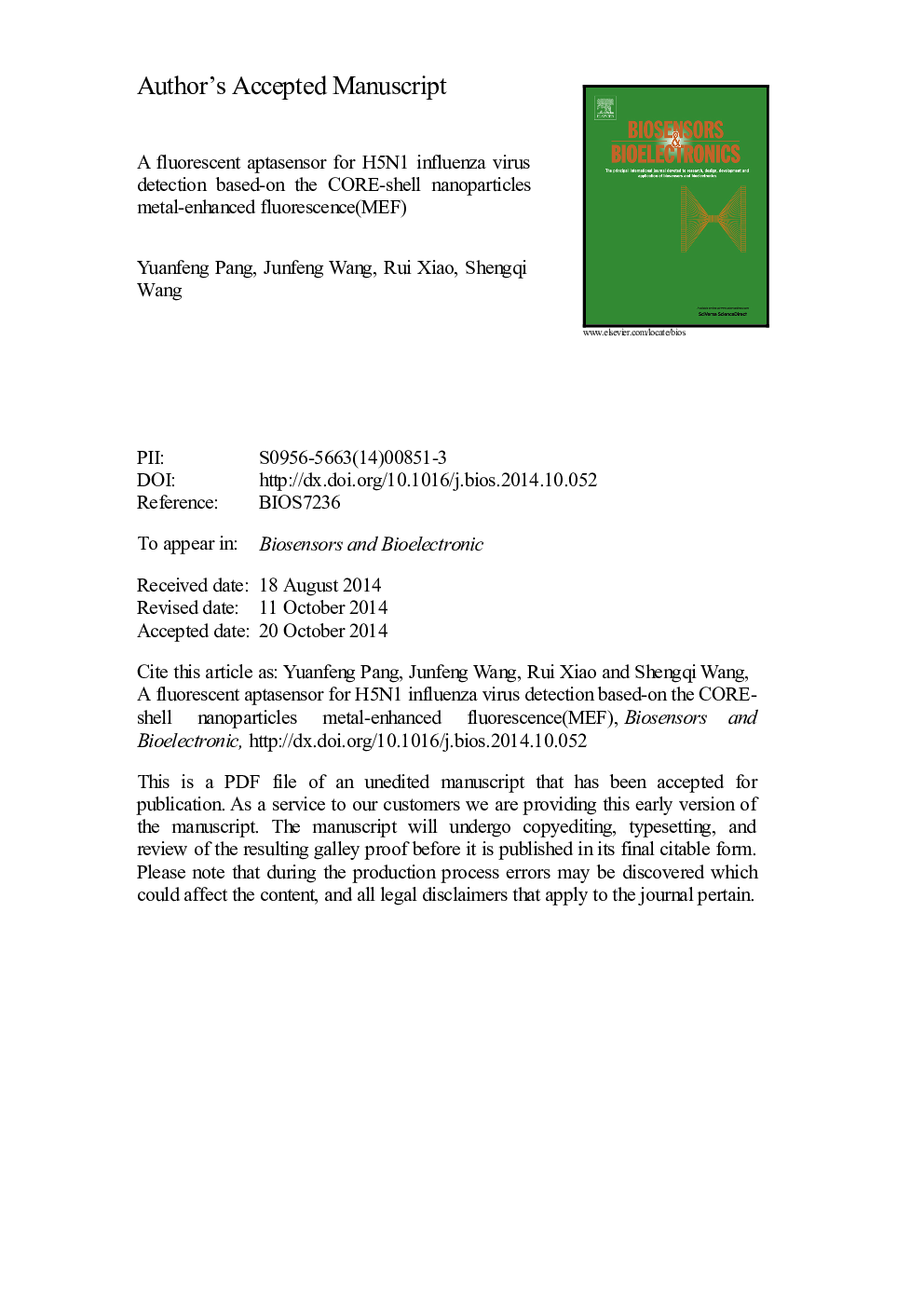| Article ID | Journal | Published Year | Pages | File Type |
|---|---|---|---|---|
| 7232832 | Biosensors and Bioelectronics | 2015 | 17 Pages |
Abstract
A fluorescent aptasensor system has been designed for the sensitive detection of recombinant hemagglutinin (rHA) protein of the H5N1 influenza virus in human serum. Guanine-richen anti-rHA aptamers by SELEX were immobilized on the surface of the Ag@SiO2 nanoparticles which performed as a metal-enhanced fluorescence (MEF) sensing platform. Thiazole orange (TO) was used as fluorescent tag which reported to the G-quadruplex secondary structural induced by aptamer-rHA binding event. In the absence of rHA protein, TO was free in the solution with almost no fluorescence emission. When rHA protein was added to the solution, the aptamer strand bound rHA protein to form a stable G-quadruplex complex, which can bind TO and excite the fluorescence emission of TO. Moreover, the excited-state TO captured by the G-quadruplex complex was forced to the surface of the Ag@SiO2 nanoparticles and could experience a surface plasmon resonance enhancement which can be transformed into more efficient fluorescence emission signals, therefore, the fluorescence signal of TO can be amplified largely. This system does not require covalent labeling with fluorophores to the aptamer and the background noise is very low. The detection of rHA protein of the H5N1 influenza virus could be operated both in aqueous buffer and human serum with the detection limit of 2 and 3.5Â ng/mL respectively. More important, the whole detection process can be finished in a PE tube within 30Â min, which makes it suitable as a self-contained diagnostic kit for H5N1 influenza virus point-of-care (POC) diagnostic.
Keywords
Related Topics
Physical Sciences and Engineering
Chemistry
Analytical Chemistry
Authors
Yuanfeng Pang, Zhen Rong, Junfeng Wang, Rui Xiao, Shengqi Wang,
